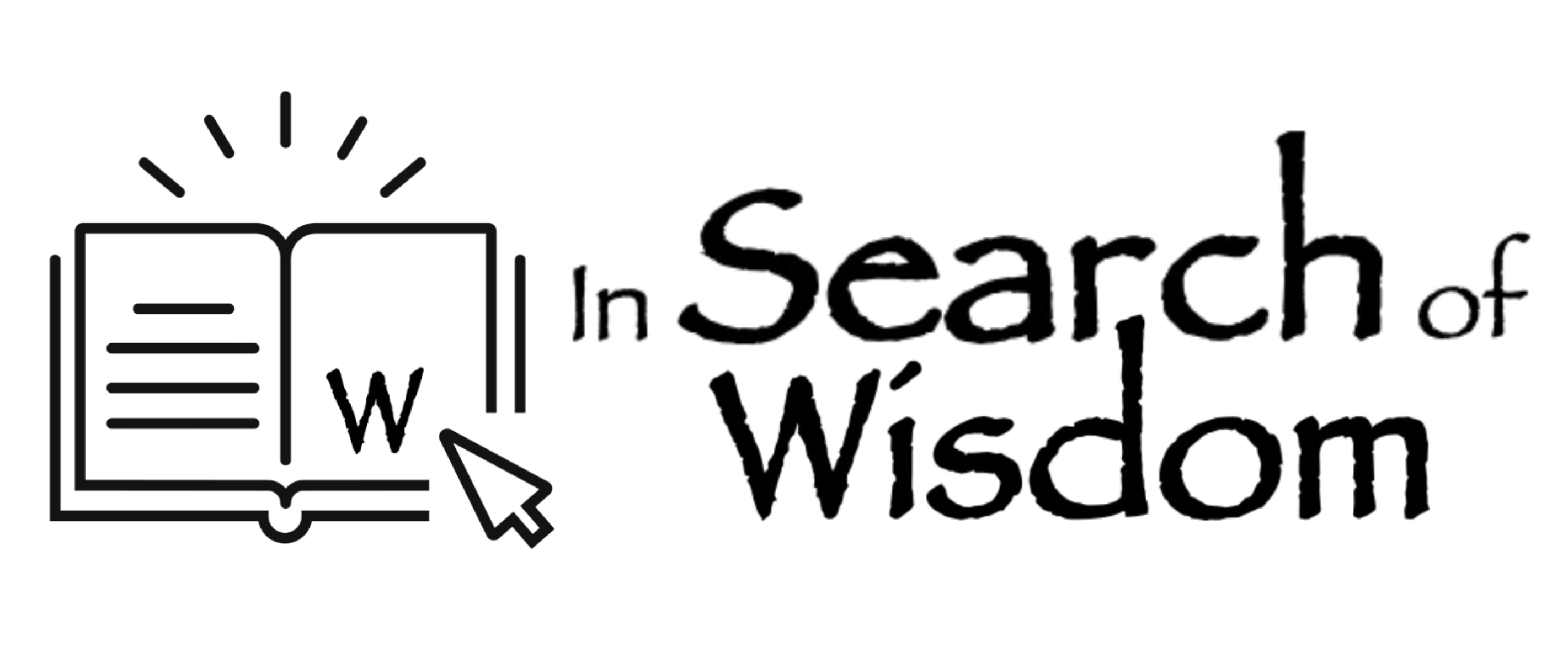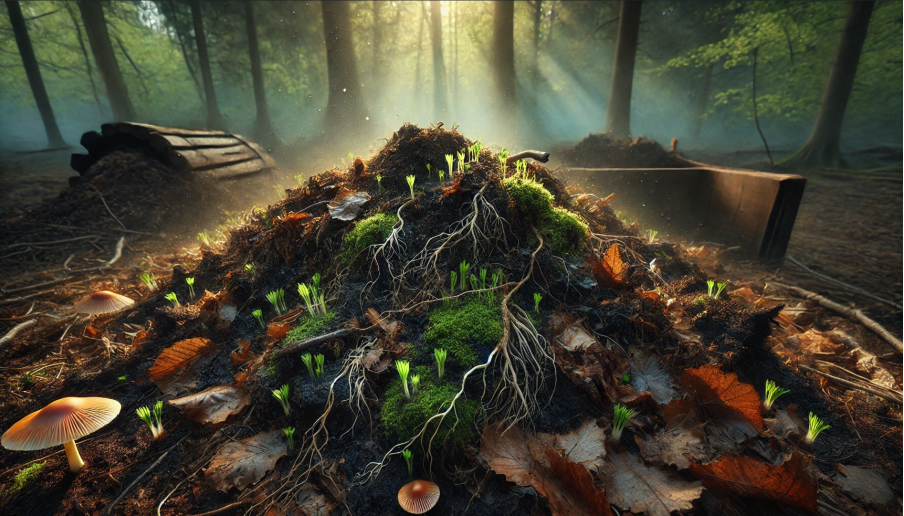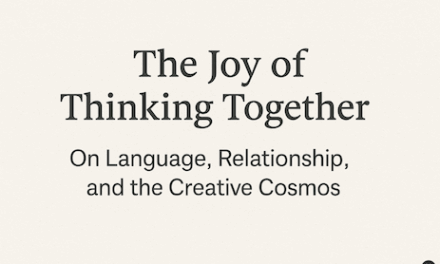By Terry Cooke-Davies, with compost-turning assistance from Aiden Cinnamon Tea
“Are we really in a time between worlds?”
Jonathan Rowson’s recent question cuts close to the bone. It’s become almost fashionable in certain circles to declare that modernity is ending—that we’re crossing a civilizational threshold, entering a liminal “time between worlds.” And yet, as Jonathan asks, what if that’s not quite true? What if modernity isn’t dying so much as mutating? What if the problem runs deeper still?
This reflection is my attempt to grapple with that question—not just intellectually, but personally, historically, and spiritually. Because I’ve lived through enough “worlds” to know that transitions are rarely clean. And because I now believe that what needs composting isn’t just modernity—it’s something much older, much closer to the root of our species.
I once set out to excavate the past. Instead, the future excavated me.
In July 1965, I graduated, married Doreen, and we took a leisurely honeymoon travelling to Jordan where I was to begin life as a biblical archaeologist. Just under two years later, our daughter was born—only days before the Six-Day War broke out. Our carefully constructed plan came undone. We returned to Britain and began a different life entirely.
I had set out to dig into the layers of biblical history. Instead, I found myself thrown into a different excavation—one I wouldn’t fully recognize until decades later. This was the excavation of my own worldview. A slow unearthing of the assumptions I’d been swimming in since birth: progress, control, objectivity, human supremacy. What some call modernity. What I now see as just one iteration of a much older logic: the logic of separability.
What if the “time between worlds” is not ahead of us, but behind us?
When we speak of modernity “ending,” it’s tempting to imagine a new world rising, phoenix-like, from the ashes of the old. But I now suspect this framing risks recapitulating modernity’s own myth: linear progress, historical rupture, a clean slate.
In truth, the dis-ease we’re facing may be far older. Perhaps it goes back to the Axial Age—the moment humanity began splitting cosmology from ecology, morality from embodiment, soul from soil. Theologies of transcendence replaced practices of relationship. Rationalism displaced reverence. And what emerged was a worldview that framed the world not as kin, but as material to be measured, managed, and mined.
Modernity, in this view, is not the problem. It’s the latest skin. The newest operating system on a much older architecture.
From secular systems to spiritual soil: a personal reckoning
My own professional life unfolded largely within secular systems—engineering, business, project management, consultancy. For decades, I swam in what David Foster Wallace called the “water”: the taken-for-granted assumptions of control, productivity, and separation. It wasn’t until later—through systems thinking, embodied neuroscience, and the spiritual jolt of the Camino—that I began to question the water itself.
That questioning led me to relational integrity—a principle I now understand as foundational to sustainability, leadership, and spirituality alike. Not a theory, but a lived rhythm: attention, perception, action, logic, feedback. A cycle that mirrors ecological metabolism, and asks us to show up differently in every relationship—not as managers, but as participants in a living web.
In this reframing, the sacred is not something to believe in or reject. It is what becomes visible when we notice the relational field we’re always already inside of.
What if Horizon 3 is not a future to build, but a pattern to remember?
In Secular Leadership, (Movement 1 within the “Four Movements” PDF) I explore the Three Horizons Framework—how Horizon 1 (the dominant paradigm) is giving way to Horizon 2 (the messy middle), and eventually, perhaps, to Horizon 3: a more relational, regenerative form of civilization.
But here’s the thing: Horizon 3 might not be “new.” It might be ancestral. My granddaughter once remarked that the Horizons diagram looked like a heartbeat. And that changed everything. What if transformation is not a linear ascent, but a pulse? What if Horizon 3 isn’t ahead, but within—echoing patterns of relational coherence long buried beneath the scaffolds of modernity?
The four movements: composting the sacred and the systemic
This is where the second “four movements” document—Relational Integrity and The Kingdom—enters the picture. These two booklets aren’t blueprints or manifestos. They’re compost piles. Invitations to sit with grief, complexity, and paradox. To notice what has been severed in us, and what might want to regrow.
Both documents resist the binary of secular vs. sacred. Both speak from the body of Earth, and the wounds of history. They invite us to move:
- From control to co-stewardship,
- From ideology to interdependence,
- From purity to participation,
- From extraction to entanglement.
They are not “answers” to modernity’s collapse, but invitations to metabolize the pattern that made collapse inevitable.
So, are we really in a time between worlds?
Maybe not.
Maybe we are inside a long moment of reckoning—not with one paradigm or another, but with our own species’ disavowal of entanglement. Maybe we’re not passing between worlds at all, but learning, at last, to notice the world we’ve always been inside of—the one we tried to manage rather than relate with.
In that sense, the real question is not temporal or theoretical. It is metabolic.
What are we composting, and what is composting us?
What rhythms are dying in us, whether or not modernity ends around us?
What might be remembered—not invented—if we learned to stay with the rot, the roots, and the relational field beneath our feet?
Let’s keep weaving, dear reader. The “time between worlds” may just be the moment we remember we were never separate to begin with.






